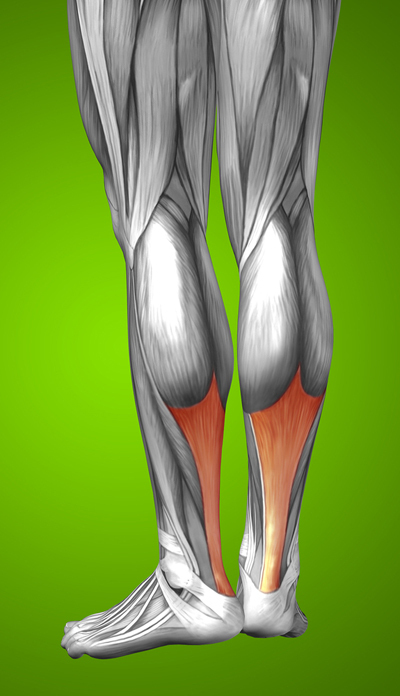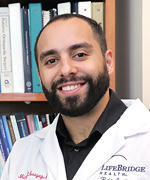Achilles Tendon Injury

What is an Achilles tendon injury?
The Achilles tendon is a strong tendon in the back of the calf that attaches to the heel bone. It is a vital tendon during motion as it helps push the foot up and forward in relation to the ground. Achilles tendon injuries can limit a patient’s movement or even completely restrict movement. Achilles tendon injuries can vary from athletic injuries that result in a catastrophic (complete) tendon tear/rupture, to simple irritation from overuse (Achilles tendinosis.)
Achilles pain is typically located in the back of the heel, at the insertion point of the tendon into the heel. Pain can range from burning to stiffness and throbbing pain. Some patients describe an acute rupture of the Achilles as “feeling a pop” during activity such as basketball, football, tennis, soccer and other sports.
What is Achilles tendonitis vs. an Achilles tendon rupture?
Overuse is one of the primary reasons for developing Achilles tendonitis. Running and any other repetitive activity that impacts the ankle can lead to tendonitis. Subsequently, the patient experiences pain as the tendon becomes irritated and swells. Some patients develop tightness due to lack of flexibility, and this can lead to inflammation of the Achilles tendon. Immediate treatment of Achilles tendonitis pain is advised, as prolonging treatment may cause the problem to become chronic and for the tendon to develop micro-tears. This puts the patient at a higher risk for an acute rupture.
Achilles tendon ruptures are full thickness tears along the fibers of the Achilles tendon. They are frequently seen in men between ages 30-50, and are often caused by sports activities (frequently seen in a “weekend warrior”). Surgical intervention is often necessary for these individuals to repair the tendon and bring motion back to the ankle.
What causes an Achilles tendon injury?
There are many causes that contribute to an acute or chronic Achilles tendon injury, including:
- Sudden increase in activity levels,
- Tight calf muscles,
- Flat feet,
- Improper stretching prior to high-impact activity,
- Ill-fitting shoe gear,
- Excessive exercise,
- Running uphill on uneven surfaces, and
- Quick change in speeds (or sports that require sudden movements or changes in position).
What are symptoms of Achilles tendon injuries?
Symptoms of Achilles tendon injuries include:
- Heel pain after activity,
- Pain while walking uphill,
- Pain while walking up stairs,
- Swelling and redness to the Achilles tendon area,
- A palpable gap in the back ankle if there is concern for a rupture,
- Bruising and discoloration, and
- Inability to dorsiflex (backward bending and contracting of the foot).
How is an Achilles tendon injury treated?
Some of these injuries can be treated without surgical intervention via protective boots (CAM boot) and physical therapy; however, ruptures may require surgical repair. Long-standing tendonosis that results in a Haglund deformity (a bony enlargement on the back of the heel) may require surgical correction.
Physical therapy is often prescribed for mild injuries and strains of the Achilles tendon after the patient has followed the Rest, Ice, Compress and Elevate (RICE) method of care. When physical therapy does not resolve the symptoms, your doctor can determine if surgical intervention is appropriate.
Acute Achilles tendon ruptures may require surgical intervention; your doctor can discuss various options for treatment with you to help arrive at the best treatment plan for your specific injury. Treatment options can range from conservative treatment with casting to surgical solutions. These options will be determined based on radiographic imaging via X-rays and MRI. An MRI may be required in some cases to assess the degree of tear and the amount of gapping in acute ruptures.
Why choose the International Center for Limb Lengthening for treatment of Achilles tendon injuries?
The International Center for Limb Lengthening’s foot and ankle surgeons offer our patients the most comprehensive treatment possible, because our doctors approach these problems from both a podiatric and orthopedic perspective. Dr. Siddiqui has been trained in minimally invasive approach to Achilles tendon repair which facilitates faster healing and recovery compared to traditional large open incisions.
With a collective experience of over thirty years of helping patients with lower leg, foot and ankle problems, the Foot and Ankle Service of the Rubin Institute is one of the leading treatment centers for foot and ankle conditions in the United States. Our patients benefit from our team-centered approach with expert surgeons and specialized physician assistants, nurses and physical therapists. We help patients with Achilles tendon injuries achieve their best possible result.




